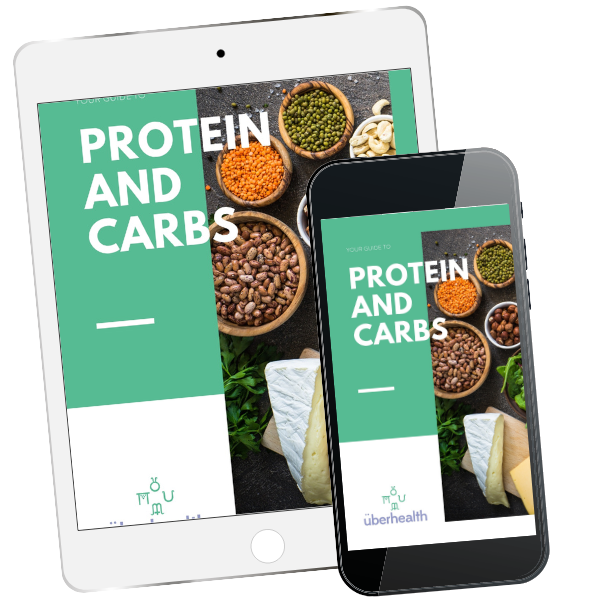Anti-Inflammatory vs Recovery Nutrition: When to Calm Inflammation and When to Let It Do Its Job

Inflammation has become a bit of a dirty word in wellness circles. We’re told to fight it at all costs by loading up on turmeric, fish oil, antioxidants, and anti-inflammatory foods to stay “healthy” and recover faster.
But not all inflammation is bad.
In fact, post-exercise inflammation is a vital part of how our bodies adapt to training. If we blunt it too much, too soon, we might actually interfere with performance gains.
The key lies in understanding the difference between chronic inflammation (harmful) and acute, exercise-induced inflammation (helpful), and knowing when anti-inflammatory strategies support recovery versus when they could hinder it.
This is where both athletes and practitioners need a nuanced approach.
Understanding Inflammation: The Good and the Bad
Acute Inflammation (Helpful)
- Occurs after a workout, especially hard or unaccustomed training.
- Signals the body to repair muscle fibres, adapt, and get stronger.
- Typically resolves within 24–48 hours.
Chronic Inflammation (Harmful)
- Low-grade inflammation persisting over time.
- Linked to fatigue, overtraining, poor recovery, immune suppression, and increased injury risk.
- Common in athletes with inadequate fueling, high stress, or underlying health issues.
Why This Matters for Athletes
If you shut down every inflammatory response immediately after exercise (e.g., mega-dosing antioxidants or fish oils), you may reduce the very signalling that leads to adaptation.
But if you ignore persistent inflammation from overtraining, poor diet, or gut health issues, performance will suffer long-term.
The art is knowing when to let inflammation do its work and when to step in to calm it.
For Practitioners: Context Is Everything
As practitioners, our job isn’t to eliminate inflammation across the board. It’s to differentiate acute vs chronic, tailor interventions to the athlete’s training phase, and educate them on timing.
- In base training, mild inflammation helps adaptation - support recovery with food-first strategies, but avoid heavy-handed supplementation post-session.
- In peak competition or multi-day events, controlling inflammation may be beneficial to keep athletes functional and reduce cumulative stress.
- In injury or illness recovery, anti-inflammatory support is often essential.
Nutrition for Managing Inflammation
1. Anti-Inflammatory Foods
- A daily foundation for all athletes as it supports long-term health, reduces chronic inflammation risk.
- Includes colourful fruit and vegetables, fatty fish, nuts, seeds, olive oil, herbs, and spices.
- Particularly rich in polyphenols (berries, greens), omega-3 fatty acids (salmon, chia, walnuts), and bioactive compounds (ginger, turmeric).
2. Antioxidants
- Neutralise free radicals produced during exercise.
- Caution: High-dose supplements (vitamin C, E) immediately post-training can blunt training adaptations.
- Best strategy: Obtain antioxidants primarily from whole foods—berries, citrus, leafy greens—rather than isolated mega-doses.
3. Turmeric (Curcumin)
- Potent anti-inflammatory, useful in chronic joint pain, overuse injuries, or intense training blocks.
- Timing: Better used between sessions or as a daily support, rather than immediately post-training if adaptation is the goal.
- Combine with black pepper (piperine) or fats for better absorption.
4. Fish Oil (Omega-3s)
- Supports joint health, cardiovascular function, and reduces chronic inflammation.
- Useful for athletes with high training loads, poor omega-3 intake, or inflammatory conditions.
- Can be beneficial during competition phases where recovery speed > adaptation.
5. Polyphenol-Rich Foods
- Tart cherry juice, blueberries, pomegranate are all shown to reduce DOMS (delayed onset muscle soreness).
- Great in taper or competition periods to maintain freshness.
When to Let Inflammation Be
Post-exercise soreness? That’s adaptation at work. In these cases:
- Focus on balanced meals (carbs + protein + colour) rather than supplements.
- Avoid high-dose antioxidant or anti-inflammatory supplements immediately post-session.
- Use gentle recovery strategies such as hydration, sleep, and mobility.
When to Actively Reduce Inflammation
- Back-to-back events (e.g., stage races, tournament weekends)
- Heavy training blocks where recovery trumps adaptation
- Injury recovery or chronic joint issues
- Overtraining symptoms: fatigue, poor sleep, persistent soreness
Here, targeted strategies like omega-3s, turmeric, or polyphenol-rich recovery drinks can help manage systemic stress.
Practical Takeaways for Athletes
- Daily: Build an anti-inflammatory diet with whole foods including fruits, vegetables, fatty fish, nuts, seeds, and olive oil.
- Post-Training: Prioritise carbs + protein + hydration first; save concentrated anti-inflammatories for later.
- Competition Phase: Use turmeric, cherry juice, or omega-3s strategically to speed recovery between events.
- Chronic Issues: Work with a practitioner to address underlying causes such as overload, gut health, and nutrient deficiencies.
Practical Takeaways for Practitioners
- Assess athlete context: training phase, injury status, inflammation symptoms.
- Educate on timing: adaptation vs recovery needs differ.
- Use a food-first approach, with supplements targeted and time-bound.
- Monitor biomarkers (CRP, omega-3 index, iron, vitamin D) where relevant.
The Bottom Line
Inflammation isn’t the enemy; it’s a messenger. The trick is learning when to listen and when to intervene.
By balancing anti-inflammatory nutrition with the body’s natural adaptation process, athletes can train smarter, recover better, and protect long-term health - all without blunting the very gains they’re chasing.
Want To Learn More?
This topic - and many others on fuel timing, recovery, and long-term performance - is explored in depth in my Fuelling for Endurance guidebook.
Inside, you’ll find:
- Recovery nutrition frameworks
- Supplement timing and dosages
- Gut health strategies for endurance sports
- Practical templates for training and race-day fueling
Whether you’re an athlete refining your own nutrition or a practitioner supporting others, this guide is packed with evidence-based tools you can apply immediately.
👉 Download the guide here and give yourself (or your clients) the fuel to go further.
FREE RESOURCE


